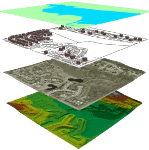 Managing a survey effectively is a key component of most PhD research projects. Whether your study involves collecting quantitative, qualitative, or mixed-methods data, having the right tools and support in place is essential to ensure your survey process runs smoothly from start to finish. We offer expert support for Microsoft Forms integration specifically tailored to meet the requirements of academic research at the doctoral level. PhD students are often required to gather primary data through surveys as part of their research methodology. However, designing a functional and ethically sound survey that meets university guidelines can be a time-consuming and technically demanding process. Microsoft Forms is a practical tool that simplifies survey design, distribution, and data collection. Still, for students who are not familiar with its advanced settings or customization features, setting it up correctly can be challenging. This is where our expertise becomes valuable. We offer specialized assistance. Our support ensures your survey is not only easy to use but also compliant with research ethics standards, institutional policies, and data protection regulations. We work closely with doctoral candidates to customize Microsoft Forms according to their specific research objectives, question formats, and data types. This includes support for branching logic, multiple response types, Likert scales, conditional questions, and more, ensuring the survey aligns with your research design. Our services also include consultation on how to manage collected data effectively. Microsoft Forms offers real-time data capture and seamless integration with Excel and other data analysis tools, making it an efficient choice for students needing to organize and analyze large sets of responses. We guide you on how to set up the data pipeline properly, so your responses are clean, accessible, and ready for analysis, without any risk of losing information or violating privacy protocols. In addition to the technical aspects, we understand the importance of ethical considerations in research. Our team guides how to structure surveys to ensure participant consent, anonymity, and confidentiality, all while adhering to institutional review board standards. We help ensure that your survey is designed with integrity and is defensible during the review or submission process. Choosing to work with our services means gaining reliable support throughout the survey phase of your research. We aim to minimize the technical burden on PhD students, allowing them to concentrate more on interpreting results and writing their thesis rather than troubleshooting survey software. With our help, your use of Microsoft Forms becomes a streamlined, secure, and academically sound component of your research process. If you need support with Microsoft Forms integration for PhD survey projects, we are here to assist. Our service is committed to helping doctoral researchers conduct surveys that meet the highest academic and ethical standards.
Managing a survey effectively is a key component of most PhD research projects. Whether your study involves collecting quantitative, qualitative, or mixed-methods data, having the right tools and support in place is essential to ensure your survey process runs smoothly from start to finish. We offer expert support for Microsoft Forms integration specifically tailored to meet the requirements of academic research at the doctoral level. PhD students are often required to gather primary data through surveys as part of their research methodology. However, designing a functional and ethically sound survey that meets university guidelines can be a time-consuming and technically demanding process. Microsoft Forms is a practical tool that simplifies survey design, distribution, and data collection. Still, for students who are not familiar with its advanced settings or customization features, setting it up correctly can be challenging. This is where our expertise becomes valuable. We offer specialized assistance. Our support ensures your survey is not only easy to use but also compliant with research ethics standards, institutional policies, and data protection regulations. We work closely with doctoral candidates to customize Microsoft Forms according to their specific research objectives, question formats, and data types. This includes support for branching logic, multiple response types, Likert scales, conditional questions, and more, ensuring the survey aligns with your research design. Our services also include consultation on how to manage collected data effectively. Microsoft Forms offers real-time data capture and seamless integration with Excel and other data analysis tools, making it an efficient choice for students needing to organize and analyze large sets of responses. We guide you on how to set up the data pipeline properly, so your responses are clean, accessible, and ready for analysis, without any risk of losing information or violating privacy protocols. In addition to the technical aspects, we understand the importance of ethical considerations in research. Our team guides how to structure surveys to ensure participant consent, anonymity, and confidentiality, all while adhering to institutional review board standards. We help ensure that your survey is designed with integrity and is defensible during the review or submission process. Choosing to work with our services means gaining reliable support throughout the survey phase of your research. We aim to minimize the technical burden on PhD students, allowing them to concentrate more on interpreting results and writing their thesis rather than troubleshooting survey software. With our help, your use of Microsoft Forms becomes a streamlined, secure, and academically sound component of your research process. If you need support with Microsoft Forms integration for PhD survey projects, we are here to assist. Our service is committed to helping doctoral researchers conduct surveys that meet the highest academic and ethical standards.
Key Microsoft Forms Features That Enhance PhD Survey Integration and Data Analysis
| Feature | Benefits for PhD Students | Integration Value |
|---|---|---|
| Excel Integration | Seamless data export for quantitative analysis | Clean data structure for direct statistical analysis |
| Conditional Logic | Adaptive surveys tailored to research goals | Better participant experience; higher data quality |
| Microsoft 365 Ecosystem | Familiar tools and centralized account access | Secure, compliant data handling for academic research |
| Multi-language Support | Reach diverse participants | Broader data sample for more robust conclusions |
| Auto-Summarized Results | Immediate insights into response patterns | Saves time in preliminary data analysis |
How to Set Up Microsoft Forms for a PhD Survey Project
Setting up Microsoft Forms for your PhD survey project is a crucial step in ensuring your data collection process is smooth, efficient, and compliant with academic standards. This guide outlines each stage clearly, enabling postgraduate researchers to manage survey design, distribution, and data handling effectively. At Data Analysis Help, we offer PhD-level survey project integration support with Microsoft Forms to assist students in successfully traversing each of these steps.
- Clearly Define the Research Objective: Before creating your survey, it's essential to outline the primary aim of your research. Ask yourself what kind of data you are collecting, whether it’s qualitative, quantitative, or a mixed-methods approach. Clarifying your objective helps ensure that every question in your survey aligns with your overarching research goals. This foundation ensures coherence in both data collection and interpretation.
- Develop a Structured and Purposeful Questionnaire: Design your survey using Microsoft Forms by choosing appropriate question types. A well-structured questionnaire should include Likert scale questions for measuring attitudes or perceptions, multiple-choice options to facilitate easy response selection, short text and long-form text inputs for open-ended responses, and date selection questions where timing is relevant. Ensure that your questions are clear, concise, and aligned with the research objective. At this stage, it may be helpful to consult with your supervisor or use our services to refine the questionnaire.
- Integrate Microsoft Forms with Excel: Microsoft Forms offers a seamless connection to Excel, which is essential for efficient data management. When this integration is enabled, responses are automatically stored in real time, data is organized in a format suitable for statistical analysis, and there is minimal risk of data loss or duplication. This integration is particularly beneficial for projects requiring detailed quantitative analysis. Our team can assist you in setting this up correctly to match your data structure needs.
- Conduct Pre-Testing to Validate the Survey: Before officially launching your survey, test it with a small group, such as peers or academic colleagues. This step helps identify logical inconsistencies in question flow, ambiguities in wording, and technical issues in the form design. Survey validation helps improve the respondent experience and boosts the overall reliability of your data. We can help you plan and conduct this pilot testing process to ensure it meets academic standards.
- Ensure Compliance with Data Protection Policies: As a doctoral researcher, you must ensure that your survey complies with your institution’s ethical and data protection guidelines. Important considerations include anonymity and confidentiality of responses, secure data storage practices, and transparent informed consent statements. We recommend reviewing your university’s policies or working with our team to verify that your data handling practices meet institutional requirements.
If you need Microsoft Forms services for PhD survey project integration, we are here to guide you. Our experts ensure each step, from form creation to data integration and compliance, is handled accurately and efficiently.
When to Seek Help With Integrating a PhD Survey Project with Microsoft Forms
 Conducting a PhD research project is a highly detailed and methodical process that demands careful planning, execution, and data management. When incorporating digital tools into your research design, especially for surveys, there are several points where professional support can become essential. Knowing when to seek support with integrating Microsoft Forms into PhD survey projects can save time, reduce errors, and ensure your research remains academically rigorous and compliant with ethical standards. If your survey involves more than simple data collection, such as branching logic, dependent questions, automated workflows, or integration with statistical software, it's advisable to consider assistance. At this stage, the capabilities of Microsoft Forms may appear user-friendly on the surface, but its advanced functionalities require technical expertise to fully implement without compromising the quality or integrity of your project. We specialize in supporting postgraduate researchers, particularly at the PhD level. Our focus is on helping you design, deploy, and manage your survey through Microsoft Forms in a way that aligns with your academic requirements and research objectives. For example, if your project needs to automatically export collected data into platforms like SPSS, R, or STATA for deeper statistical data analysis, we can facilitate that integration reliably and securely. We also help ensure that your data collection complies with institutional guidelines and any ethical board requirements. In addition, ethical considerations are a major factor when working with human subjects or sensitive data. Microsoft Forms does not natively address all the nuances of data confidentiality, consent forms, or secure data storage. This is another reason why involving us early in your project can be crucial. We provide guidance on structuring your survey in a way that is compliant with ethical standards while remaining user-friendly for participants. Moreover, data logic is another area where complexities often arise. Conditional paths, mandatory response validation, and dynamic content display require a deep understanding of both the platform and survey design principles. Attempting to configure these features without expert input may result in data collection errors or survey fatigue among participants. We work closely with you to configure your survey logic correctly, ensuring each response leads to meaningful, analyzable data. We also understand that your time is valuable. PhD candidates juggle coursework, teaching responsibilities, and other research tasks alongside their dissertation. Delegating the technical components of your survey to experts allows you to focus on your core research and analysis, confident that the foundation of your data is being managed professionally and accurately. Relevantly, knowing when to seek assistance with integrating Microsoft Forms in PhD survey projects is not a sign of weakness but a strategic decision that strengthens your project. If your PhD survey includes complex survey structures, ethical sensitivity, or needs integration with external analysis tools, the service provider is here to help. We offer tailored support that keeps your project on track, from survey creation to data export, all with a clear understanding of academic standards and research integrity.
Conducting a PhD research project is a highly detailed and methodical process that demands careful planning, execution, and data management. When incorporating digital tools into your research design, especially for surveys, there are several points where professional support can become essential. Knowing when to seek support with integrating Microsoft Forms into PhD survey projects can save time, reduce errors, and ensure your research remains academically rigorous and compliant with ethical standards. If your survey involves more than simple data collection, such as branching logic, dependent questions, automated workflows, or integration with statistical software, it's advisable to consider assistance. At this stage, the capabilities of Microsoft Forms may appear user-friendly on the surface, but its advanced functionalities require technical expertise to fully implement without compromising the quality or integrity of your project. We specialize in supporting postgraduate researchers, particularly at the PhD level. Our focus is on helping you design, deploy, and manage your survey through Microsoft Forms in a way that aligns with your academic requirements and research objectives. For example, if your project needs to automatically export collected data into platforms like SPSS, R, or STATA for deeper statistical data analysis, we can facilitate that integration reliably and securely. We also help ensure that your data collection complies with institutional guidelines and any ethical board requirements. In addition, ethical considerations are a major factor when working with human subjects or sensitive data. Microsoft Forms does not natively address all the nuances of data confidentiality, consent forms, or secure data storage. This is another reason why involving us early in your project can be crucial. We provide guidance on structuring your survey in a way that is compliant with ethical standards while remaining user-friendly for participants. Moreover, data logic is another area where complexities often arise. Conditional paths, mandatory response validation, and dynamic content display require a deep understanding of both the platform and survey design principles. Attempting to configure these features without expert input may result in data collection errors or survey fatigue among participants. We work closely with you to configure your survey logic correctly, ensuring each response leads to meaningful, analyzable data. We also understand that your time is valuable. PhD candidates juggle coursework, teaching responsibilities, and other research tasks alongside their dissertation. Delegating the technical components of your survey to experts allows you to focus on your core research and analysis, confident that the foundation of your data is being managed professionally and accurately. Relevantly, knowing when to seek assistance with integrating Microsoft Forms in PhD survey projects is not a sign of weakness but a strategic decision that strengthens your project. If your PhD survey includes complex survey structures, ethical sensitivity, or needs integration with external analysis tools, the service provider is here to help. We offer tailored support that keeps your project on track, from survey creation to data export, all with a clear understanding of academic standards and research integrity.
PhD Survey Project Integration Services Using Microsoft Forms
 Specializing in PhD survey project integration with Microsoft Forms, we understand the specific and complex needs of doctoral candidates working on research-intensive projects. PhD-level surveys require more than just simple data collection tools, they demand careful planning, structured question design, and seamless integration with data analysis platforms. At every stage of survey development, our services are geared toward helping PhD students build efficient and reliable survey systems using Microsoft Forms. Our primary goal is to support PhD candidates in designing and deploying surveys that are methodologically sound and academically rigorous. Microsoft Forms offers a robust, user-friendly platform for creating surveys, and our service focuses on leveraging its full capabilities in the context of doctoral research. We assist in constructing surveys that match your research framework, whether your study involves quantitative data, qualitative responses, or a combination of both. Survey design is one of the most critical components of any research project. With our services, you can expect expert support in creating question structures that produce meaningful and analyzable responses. We help ensure that each form is logically organized, with clear transitions and a smooth respondent experience, which can significantly improve participation rates and the quality of collected data. In addition to designing the form itself, we pay special attention to integration. A well-integrated survey system allows for easy data export, compatibility with statistical software, and supports streamlined data cleaning and coding processes. We tailor each project to the specific requirements of your research methodology, helping ensure that the output you receive is in a format conducive to your analysis plan. We recognize that ethics and data integrity are essential to any academic project. That’s why we help PhD students configure their Microsoft Forms in a way that aligns with institutional ethical standards and data protection regulations. We guide you through options like anonymous responses, secure data storage, and informed consent features within the platform. Throughout the entire process, from initial consultation and design to testing, deployment, and integration, we provide consistent, personalized support. We aim to remove technical barriers so you can focus on your research questions and findings. Our role is to make the technology work for you, with reliability and academic precision. Choosing our PhD survey project integration services using Microsoft Forms means having a dedicated partner who understands the stakes and structure of doctoral research. We offer reliable help that respects both the academic process and your individual goals. Whether you are just starting to plan your survey or need help integrating your existing form with your data analysis workflow, our services are designed to meet your needs with professionalism and care. Let us help simplify your survey process while ensuring it meets the highest academic standards. Your PhD deserves a survey system that is accurate, efficient, and ready to support your research outcomes.
Specializing in PhD survey project integration with Microsoft Forms, we understand the specific and complex needs of doctoral candidates working on research-intensive projects. PhD-level surveys require more than just simple data collection tools, they demand careful planning, structured question design, and seamless integration with data analysis platforms. At every stage of survey development, our services are geared toward helping PhD students build efficient and reliable survey systems using Microsoft Forms. Our primary goal is to support PhD candidates in designing and deploying surveys that are methodologically sound and academically rigorous. Microsoft Forms offers a robust, user-friendly platform for creating surveys, and our service focuses on leveraging its full capabilities in the context of doctoral research. We assist in constructing surveys that match your research framework, whether your study involves quantitative data, qualitative responses, or a combination of both. Survey design is one of the most critical components of any research project. With our services, you can expect expert support in creating question structures that produce meaningful and analyzable responses. We help ensure that each form is logically organized, with clear transitions and a smooth respondent experience, which can significantly improve participation rates and the quality of collected data. In addition to designing the form itself, we pay special attention to integration. A well-integrated survey system allows for easy data export, compatibility with statistical software, and supports streamlined data cleaning and coding processes. We tailor each project to the specific requirements of your research methodology, helping ensure that the output you receive is in a format conducive to your analysis plan. We recognize that ethics and data integrity are essential to any academic project. That’s why we help PhD students configure their Microsoft Forms in a way that aligns with institutional ethical standards and data protection regulations. We guide you through options like anonymous responses, secure data storage, and informed consent features within the platform. Throughout the entire process, from initial consultation and design to testing, deployment, and integration, we provide consistent, personalized support. We aim to remove technical barriers so you can focus on your research questions and findings. Our role is to make the technology work for you, with reliability and academic precision. Choosing our PhD survey project integration services using Microsoft Forms means having a dedicated partner who understands the stakes and structure of doctoral research. We offer reliable help that respects both the academic process and your individual goals. Whether you are just starting to plan your survey or need help integrating your existing form with your data analysis workflow, our services are designed to meet your needs with professionalism and care. Let us help simplify your survey process while ensuring it meets the highest academic standards. Your PhD deserves a survey system that is accurate, efficient, and ready to support your research outcomes.
Common Limitations in Microsoft Forms Integration
When working with Microsoft Forms, especially for academic research projects such as PhD surveys, it’s important to be aware of several practical limitations that can affect data quality, usability, and workflow efficiency. Microsoft Forms is a useful tool for basic data collection, but it lacks the advanced customization and control required for more complex survey needs. We have reliable PhD survey project Microsoft Forms integration consultants who help students avoid these common pitfalls through effective planning and integration. Below are the most frequent limitations users encounter with Microsoft Forms:
- Limited Logic Capabilities: Microsoft Forms supports basic branching logic, allowing users to direct respondents to different questions based on previous answers. However, its logic options are very limited compared to more advanced survey platforms. For example, it cannot handle multi-level conditional paths, question piping, or dynamic text substitution. This presents a significant constraint when designing surveys with multiple cohorts, adaptive questioning, or diverse response paths, common requirements in doctoral research.
- Export Formatting Challenges: Once data is collected, Microsoft Forms provides export functionality to Excel. However, exported spreadsheets often contain formatting inconsistencies. Column headers may appear as full question texts, sometimes including extra characters or line breaks, which can make the dataset hard to clean and analyze directly. Additionally, response formatting can vary depending on question types, which adds extra steps in preparing the data for statistical processing or qualitative analysis.
- Response Collection Limits for Free Accounts: Microsoft Forms includes restrictions on the number of responses that can be collected, particularly on free or basic Microsoft 365 accounts. While business or enterprise subscriptions allow for greater limits, users on standard plans may find themselves unexpectedly capped, potentially losing critical data if not properly managed in advance. This can disrupt timelines and compromise the integrity of a survey if response collection is halted mid-way.
- Limited Customization and Integration Features: Microsoft Forms does not support extensive visual customization or seamless integration with third-party platforms without workarounds. This may limit the ability to embed forms within customized websites, align the visual design with institutional branding, or integrate the form directly with data analysis tools. For researchers needing real-time connections between form responses and processing platforms, these limitations can become barriers.
- Basic Access Control and Permissions: Managing who can view and submit responses is somewhat inflexible. While Microsoft Forms supports internal and external response options, it does not offer granular permission controls or anonymous ID tracking in a structured way. For surveys requiring confidential but traceable participation, such as those involving ethics-reviewed research protocols, this can be a serious drawback.
As a reliable helper, we support students by offering Microsoft Forms integration help for PhD survey projects. Whether it’s redesigning your logic structure, cleaning up exported data, or avoiding technical limits through the right Microsoft 365 configuration, our team can ensure your PhD survey runs smoothly from the start. By addressing these limitations early, we help maximize both data integrity and researcher efficiency.
Why PhD Students Use Microsoft Forms for Survey Projects
 PhD students require reliable, efficient tools for data collection when conducting survey-based research. Among the available options, Microsoft Forms has become a preferred choice for many. We have consistently observed a growing number of students turning to us for guidance, the reason why we provide Microsoft Forms setup services for PhD survey projects. This trend is not accidental, it is driven by the practical advantages Microsoft Forms offers in a research environment where data quality, security, and ease of use are crucial. One of the most significant reasons PhD students choose Microsoft Forms is its straightforward and user-friendly interface. Unlike other survey tools that may require a learning curve or involve unnecessary complexity, Microsoft Forms enables students to create, distribute, and manage surveys with minimal technical effort. The platform supports a variety of question types, making it suitable for both qualitative and quantitative data collection. Students can set up surveys quickly and begin collecting responses without needing extensive training or prior experience with survey software. Another advantage is the seamless integration with Microsoft Excel, a tool many PhD students already use for data organization and basic analysis. As responses are submitted through Microsoft Forms, they are automatically populated into an Excel spreadsheet. This feature eliminates manual data entry and reduces the potential for human error, streamlining the workflow from data collection to analysis. Additionally, the Excel integration makes it easier to sort, filter, and visualize the data before it is exported into more specialized statistical software. Data security and privacy are paramount in academic research, especially when handling sensitive or personal information. Microsoft Forms is part of the Microsoft 365 suite, which offers robust data protection features. PhD students benefit from enterprise-level security and compliance standards, ensuring that participant data is handled within a secure and centralized system. Many institutions already subscribe to Microsoft 365, which further simplifies the adoption of this platform within academic environments. Real-time data visualization is another feature that makes Microsoft Forms appealing to doctoral researchers. As responses are collected, students can immediately view charts and summaries that help them monitor survey progress and detect any anomalies early. This allows them to make timely adjustments to their survey strategy if necessary. Moreover, Microsoft Forms supports smooth integration with statistical analysis tools such as SPSS and R. Once data is exported to Excel, students can easily import it into their preferred software for in-depth statistical data analysis. This compatibility supports the rigorous analytical demands of PhD-level research without requiring additional steps or complex data transformations. Needless to say, students seek Microsoft Forms integration guidance for PhD survey projects while facing the tough task of handling the survey. We recommend Microsoft Forms to doctoral students who need a trustworthy solution for designing, distributing, and analyzing surveys. Its features align well with the needs of academic research, making it an ideal choice for students who require accuracy, efficiency, and security in their data collection process.
PhD students require reliable, efficient tools for data collection when conducting survey-based research. Among the available options, Microsoft Forms has become a preferred choice for many. We have consistently observed a growing number of students turning to us for guidance, the reason why we provide Microsoft Forms setup services for PhD survey projects. This trend is not accidental, it is driven by the practical advantages Microsoft Forms offers in a research environment where data quality, security, and ease of use are crucial. One of the most significant reasons PhD students choose Microsoft Forms is its straightforward and user-friendly interface. Unlike other survey tools that may require a learning curve or involve unnecessary complexity, Microsoft Forms enables students to create, distribute, and manage surveys with minimal technical effort. The platform supports a variety of question types, making it suitable for both qualitative and quantitative data collection. Students can set up surveys quickly and begin collecting responses without needing extensive training or prior experience with survey software. Another advantage is the seamless integration with Microsoft Excel, a tool many PhD students already use for data organization and basic analysis. As responses are submitted through Microsoft Forms, they are automatically populated into an Excel spreadsheet. This feature eliminates manual data entry and reduces the potential for human error, streamlining the workflow from data collection to analysis. Additionally, the Excel integration makes it easier to sort, filter, and visualize the data before it is exported into more specialized statistical software. Data security and privacy are paramount in academic research, especially when handling sensitive or personal information. Microsoft Forms is part of the Microsoft 365 suite, which offers robust data protection features. PhD students benefit from enterprise-level security and compliance standards, ensuring that participant data is handled within a secure and centralized system. Many institutions already subscribe to Microsoft 365, which further simplifies the adoption of this platform within academic environments. Real-time data visualization is another feature that makes Microsoft Forms appealing to doctoral researchers. As responses are collected, students can immediately view charts and summaries that help them monitor survey progress and detect any anomalies early. This allows them to make timely adjustments to their survey strategy if necessary. Moreover, Microsoft Forms supports smooth integration with statistical analysis tools such as SPSS and R. Once data is exported to Excel, students can easily import it into their preferred software for in-depth statistical data analysis. This compatibility supports the rigorous analytical demands of PhD-level research without requiring additional steps or complex data transformations. Needless to say, students seek Microsoft Forms integration guidance for PhD survey projects while facing the tough task of handling the survey. We recommend Microsoft Forms to doctoral students who need a trustworthy solution for designing, distributing, and analyzing surveys. Its features align well with the needs of academic research, making it an ideal choice for students who require accuracy, efficiency, and security in their data collection process.
FAQs on Microsoft Forms Integration for Doctoral Survey
We understand the importance of clear, actionable guidance when it comes to managing and analyzing data collected through Microsoft Forms, especially for academic research or structured data handling. Below are frequently asked questions, specifically curated to assist students with the implementation and ensure a smooth workflow from data collection to statistical analysis.
- How can I export data from Microsoft Forms into SPSS for analysis? To export your collected data from Microsoft Forms into SPSS, follow a two-step process. First, download the responses by selecting the “Open in Excel” option from your Microsoft Forms dashboard. This will generate a spreadsheet where each question is represented as a column and each respondent's answers appear in rows. Once you have the Excel file, open it in Microsoft Excel and save it in CSV format. This format is compatible with SPSS. Then, open SPSS and import the CSV file. Use the Variable View in SPSS to properly label and format the variables based on your research requirements. We recommend that you double-check the variable types and ensure correct coding before conducting any analysis.
- Is it possible to conduct anonymous surveys using Microsoft Forms for academic research purposes? Yes, Microsoft Forms supports the creation of anonymous surveys, which is particularly useful for academic research that requires respondent privacy. To do this, you must manually adjust the form settings. Turn off the option that records the names or emails of respondents. Additionally, disable the requirement for participants to log in with their institutional accounts. These two actions ensure that submissions remain anonymous. Our services encourage this approach for compliance with data protection standards and academic research protocols.
- What data format does Microsoft Forms use when exporting responses? When you export responses from Microsoft Forms, the data is provided in an Excel spreadsheet format. In this spreadsheet, each column corresponds to a question asked in the form, and each row represents an individual response. This structured format is ideal for quantitative analysis and can be easily adapted to various statistical tools, including SPSS, R, and Python. We ensure that our guidance aligns with standard data processing methods, making it easier for users to prepare their data for structured markup and analysis.
- Are special permissions required to use Microsoft Forms for research-related surveys? Yes, when using Microsoft Forms for surveys involving human participants, institutional approval is generally necessary. Most academic or professional research activities that include surveys fall under ethical guidelines that mandate prior approval from a relevant ethics board or institutional review committee. This is particularly important when dealing with personally identifiable information or sensitive topics. We advise that you consult your institution’s specific policies and obtain all required permissions before deploying your survey through Microsoft Forms.
By offering these practical answers, we aim to support effective data usage and integration, particularly for users engaging in research or advanced data handling.








